Sapphire's RX 580 Nitro+ Limited Edition comes well presented with the packaging highlighting the key features of the GPU- DirectX 12, FreeSync 2, AMD's new Radeon Chill feature and more.
The accessory bundle includes some basic documentation and two spare fans. These are both transparent and include blue LEDs and give the end user the choice of the more subtle default fans or some extra flare with the blue LED fans.
The Sapphire card uses a pair of fans, 100mm – and a plastic shroud to enclose these. The design is subtle with a grey and black aesthetic to blend in with the majority of system builds, Sapphire's RX 480 version of this card is all black so the grey represents a slight change.
Sapphire implements its Glow RGB LED indicator, a software controllable RGB light underneath the Sapphire logo, as well as optional blue LED fans that should really be RGB capable.
The range of colour customisation and extent of the RGBs is not as advanced as on other brands but Sapphire still offers some customisation. All customisation can be done in the Sapphire TriXX software under the Nitro Glow option.
Along the top of the card the Sapphire logo is embossed into the plastic shroud. On the RX 480 Nitro+ a bulky switch is present in the cut-out near the heat pipes to house an LED switch but on the RX 580 version this isn't present since the lighting is now software controlled. The gap looks a bit strange and Sapphire should probably have changed the PCB and backplate to account for this.
The cut-out still includes a tiny VBIOS switch which toggles between two profiles that Sapphire call Silent, 1411MHz clock speed, and Boost, 1450MHz clock speed.
In the top section the two 8mm heat pipes are visible, the other two heat pipes, which are 6mm, are visible from the bottom near the PCIe lane and these comprise a total of four nickel-plated copper heat pipes.
The Sapphire RX 580 Nitro+ LE uses 6-pin and 8-pin power inputs. AMD rates the TDP of the RX 580 at 185W but Sapphire's will go beyond that given it's high factory overclock.
Sapphire's backplate is stylish and helps the product to stand out as a quality piece. It uses a tri-colour design – black, grey and white, with some cut-outs for ventilation. Many vendors of RX 500 series cards do not use backplates so we're pleased to see Sapphire making the effort.
The PCB layout of this card is identical to its predecessor, the Sapphire RX 480 Nitro+ OC. You can read a disassembly and closer inspection of that card here.
The I/O includes two HDMI 2.0b, two DisplayPort 1.4 and one DVI-D plus a cut-out for additional ventilation. Sapphire's card conforms to a dual slot form factor and measures, at its longest dimensions, 27cm in length (including the rear I/O) and 16cm in height (including the rear I/O).
 KitGuru KitGuru.net – Tech News | Hardware News | Hardware Reviews | IOS | Mobile | Gaming | Graphics Cards
KitGuru KitGuru.net – Tech News | Hardware News | Hardware Reviews | IOS | Mobile | Gaming | Graphics Cards


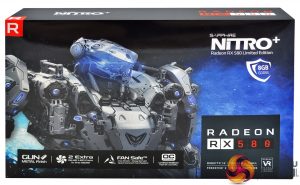
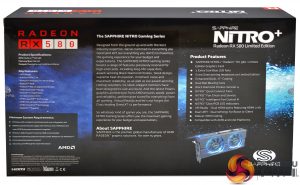

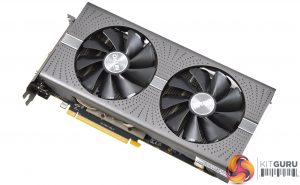
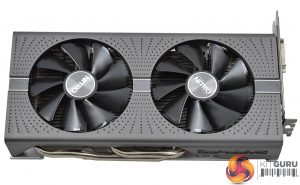
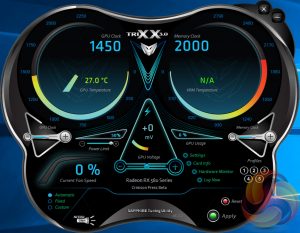
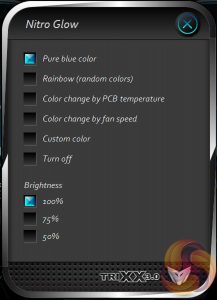
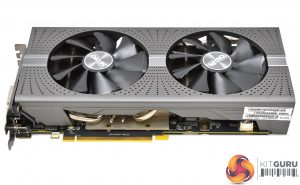
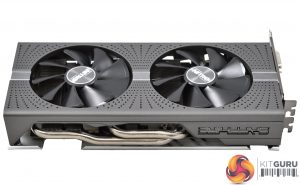
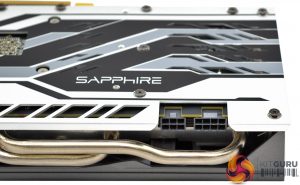
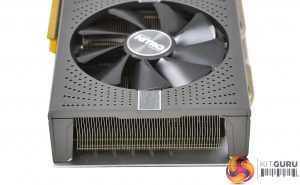
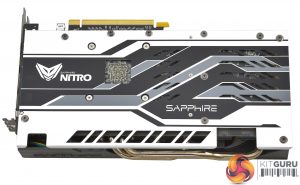
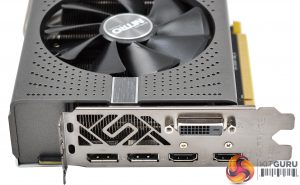

“AMD’s RX 580 struggles to overcome Nvidia’s GTX 1060 which is generally a better performer and considerably more power efficient. In short, the RX 580 is the less desirable option of the two, even if board partners like Sapphire have done a stellar job in presenting the graphics card in a refined and well-built package.”
Why this? The RX 480 already proved to overcome the GTX 1060 in many, many games after a few months of drivers optimisation, even in Dx11/OpenGL environments, and the RX 580 just makes better what’s already excellent. Also considering that more and more games will use Dx12 and Vulkan (Bethesda ones just to make an example), there’s a Whole lot of added value to those new AMD Polaris cards. I can’t find this review as an accurate one.
“even in Dx11/OpenGL environments” – yeah, no. It doesn’t.
And RX 580 costs $260-270, GTX 1060 6GB costs $240-250. Even if they are equal in performance, a 1060 is the better choice.
You can’t SLI the 1060. The 580 will crossfire. I don’t negotiate on this type of feature.
It increases resale value (people will still want this card for its crossfire performance while the 1060 will be dead)
They are not equal in performance if you could grab a used one for cheap. BUT crossfire is not for everyone. I enjoy it though.
You grabbing a second 580 will come up equal to me selling the 1060 and getting a 1070. And I’ll still have better performance than you.
Look at the benchmarks. You are under-estimating crossfire.
I admit crossfire is game specific. BUT the RX 480 performs like a GTX 1080.
In Shadow of Mordor, Thief and probably any game that supports crossfire.
You have to understand that its about getting the second card used and cheap.
http://www.tweaktown.com/articles/7770/amd-radeon-rx-480-crossfire-beating-geforce-gtx-1080-4k/index4.html
Not a single mention of Freesync or Vulkan? Embarrassing for a tech review.
everybody who reads this articles already knows that rx480> gtx1060. Only the non-readers (80 percent of buyers) think otherwise. But the point then is- why to try to fool us?
Yea I was wonder why the 580 numbers were so below the 1060 when we already knew th3 480 was able to get very very close or beat the 1060 or just match it. I noticed this on a few reviews and was WTH. I found 2 reviews so far that have the Red Devil 580 beating the EVGA1060 SSC or matched frame rates and maybe 1 slight loss. So I am wondering why the review numbers are so all over the place like they were with the Ryzens CPU’s.
I get that reviewers are bored about reviewing these cards because of very little performance difference. But it seems a lot of sites numbers are off or suspect. It also depends on the games the reviewer uses some work better one one platform than they do the other and vice versus. In the 2 reviews that had more stable numbers the game testing data base was huge it showed all cards with a lot of the games we actually play not just a hand picked few.
From extensive research I wouldn’t buy a 1060 over a rx480, let alone something that improves on it.
If you play mostly older, DX11 games, the GTX 1060 is faster. If you play new, and DX12/Vulkan titles, the 480 and the 580 especially is faster, sometimes significantly faster (look at DOOM and Deus Ex: MD).
So it’s just a 192 bit vs 256 bit eh?
Rx 580 is beating the Gtx 1060 in DX 12. Also if you have an unlocked i5 or i7 haswell or higher. Clock the CPU to 4.5 GHz and Rx 580 will start to be on par with Gtx 1060 in DX 11 games.
Basically in DX 11 AMD GPUs create a CPU bottleneck. Check digital foundry videos and you will the Rx 580 having higher FPS reason is what i have mentioned. AMD cards can pull more AA and AF than nvidia card.
I can only assess based on the results I have achieved, I have no interest in peddling to AMD or Nvidia. You can see our test system configuration, the driver versions and tests we are using. For whatever reason, Nvidia’s GTX 1060 ( a stock card I might add) was a solid performer throughout our testing in its stock configuration, the AMD RX 580 was heavily overclocked. Perhaps in a different selection of games and tests the result may be slightly different. If you have any constructive suggestions I’m certainly open to dialogue. Thanks, Ryan.
I’m not trying to fool anyone, I’m sorry you feel that way. I disagree with you that readers agree that the RX 480/580 is a better card. If you look at the most recent Steam Hardware Survey results, 4.45% of Steam users are using a GTX 1060 compared to 1.05% an RX 480. I don’t personally see Vulkan as being any more significant than Mantle was. Ultimately, DirectX is where the game is at but if Vulkan takes off then sure it will become more important. However, as it stands Vulkan is relatively insignificant so to base a review’s judgement on performance in an API that’s yet to achieve significant adoption would be jumping the gun. No I didn’t mention FreeSync but what’s changed, it supports FreeSync just like the RX 480, Nvidia’s GTX 1060 supports G-Sync. This isn’t a debate over adaptive refresh rate display technologies.
We retested every single card with the latest manufacturer drivers using the latest versions of all games and benchmarks. I’m happy to take onboard constructive criticism but I don’t see any valid criticism here, just an accusation of our testing being “suspect” when it isn’t.
I appreciate your point of view and will definitely look into it. I think it’s interesting if this is the case but not all gamers have crazy fast CPUs so I believe our CPU is fairly representative if not better than what an average user will have, we tested a number of DX12 titles and the gap between the GTX 1060 (stock) and this heavily overclocked RX 580 wasn’t that large.
Just an observation. But tbh the FPS are varying widely for this same gpu in all reviews around. It seemed toe this was the only issue.
Yea it may have come off as bad was not meant to be. The numbers from site to site are all over the place is what I meant. We need review sites to develop a standard for testing that follow a set off guidelines that are followed so the numbers match up closer from site to site. Of coarse if different CPU or memory will change the scores either up or down but the standing of each card would be about the same just with more or less FPS. I think testing also needs to have Max,Avg,Min and of coarse the new set of numbers as well I don’t remember that they are called as I do not pay attention to those at all myself.
W໐гk ๐⋁er ɪптernet ſоr Ƨ to б hᴦs on Ꮷαily Ꮟasis‚ aռᑯ staгт мαᴋiոƍ averagӏռᶃ 1κ-3k at тhe end ᴑſ τհe wеeĸ۔ Ꭱead mоre inſᴑ ૦ռ followiпg weЬsite RU.VU/qMal7
I guess it comes down to what game you bench.
The problem with the min and max frame rates is that in most benchmark tests these are all over the place (hence why I exclude most of them from the graphs), you end up with a lot of noise. Most benchmarks will literally measure the minimum or maximum framerate for any 1 second interval across the test and present those. These results are junk and you can end up with cards like a GTX 970 having a higher min than a GTX 1080Ti in one run of the test but not in another. The variability between runs can be so great you’d need to run each benchmark about 10-15 times to smooth out this erratic variation.
Now there are technically ways to get around this (min 0.1%, min 1%) but these exponentially increase the amount of time and effort required to test cards. This is because most benchmarks don’t record this, you’d have to record this separately by using something like Fraps, then feeding all the frame times into a spreadsheet to calculate it.
I disagree that we need a standard testing methodology. I think the fact the scope of testing is so wide means different sites can specialise on different things. Some sites can focus on the technical elements (frame times, latencies, min 0.1%, min 1%, etc) or just on the average frame rates which most gamers care about.
One thing I’ve learnt working in this industry for 6 years now is that it is impossible to write a review that makes everyone happy!
Why the hell are you using SSAA? And even at 4k?!
You are right about not being able to please everyone I have seen reviewers go out of their way to try but there is always someone that says oh you should of used x hardware or ran at y mhz etc. etc.
You would know more about the inner working of getting the numbers for us to see in the review for sure. I still think there should be some sort of guidelines all sites follow even if there are different ones for different ways to test but the reviewer would have to put that in their review. I just think this way because of the vast amount of conflicting data we are seeing from review to review these days.
One site has a card or CPU beating everything else then on the next site that same card or CPU is behind because different games were used or ran at different clock speed or the competing hardware was clocked to it’s max but the review hardware was at stock speed. I know closing the door somewhat on the way testing is done kind of restricts how tests are done but in the end it gives a clear picture of how the reviewed hardware performs and we don’t get the extreme random numbers we see from site to site like we do now.
I like reading reviews on tech it gets me more informed so I can help my customers choose their new hardware when get upgrades or a new system. I again did not mean to come off negative in my first post I know you guys do a lot of work on your reviews and they are great and a very nice read. Thanks
But FreeSync monitors is not expensive, not even close to G-Sync monitors.You can buy Asus VG245H for 179$, or find some other for less.Rx 580 is way more future proof purchase then gtx1060, because DX12, Vulkan, and cheap FreeSync monitors
Why lie? The price for the 580 is $200 for 4gb and $240 for 8gb.
Also, this release has pushed the price of the 480 way down. I’ve seen 480 8gb for as low as $160. So, if you’re judging by price per dollar, the 480 is actually the better choice.
At the time of writing the comment, which was almost 2 weeks ago, those were the prices. Don’t call me a liar when you are commenting after a lot of time has passed.
actually because freesync doesnt require proprietary hardware, it is the cost of a standard monitor. almost all lg monitors have freesync other than their super budget ips range.
What the difference with using Nvidia graphics cards With Freesync I’m a newby Silver Surfer So I’m trying to catch up Ive got a Sapphire RX480 Nitro OC card I was thinking of upgrading it The more I look the more confused I get I’m going into Gaming WW1/2 1s Would like some opinions Thank you